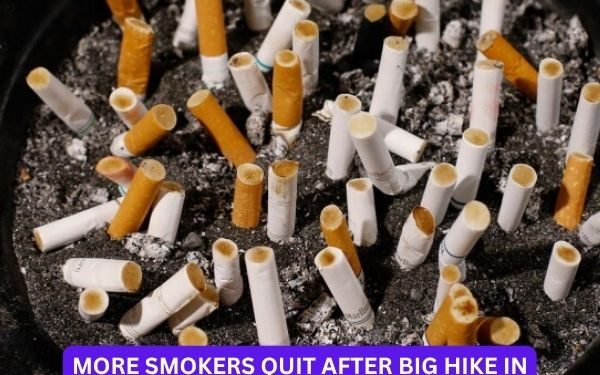When tobacco taxes go up—especially by a lot—more people tend to quit. That’s the key takeaway from a new study by researchers at UC San Diego and UC San Francisco, who found a clear link between California’s major tobacco tax increase and higher smoking cessation rates.
The study, published in the Journal of the National Cancer Institute, focused on Proposition 56, a 2016 measure overwhelmingly approved by California voters that raised the state tobacco tax by $2 per pack. Researchers say the tax hike, combined with how tobacco companies passed the cost onto consumers, made smoking significantly more expensive—and quitting more appealing.
“California’s tax increase was over 200%, and tobacco companies largely passed the increase on to their customers,” said lead author Shu-Hong Zhu, Ph.D., of UC San Diego. “The resulting price hike likely motivated a lot of smokers to quit.”
Despite the well-known health risks, nearly 1 in 5 U.S. adults (49.2 million) still used tobacco in 2022. Increasing taxes on tobacco products remains one of the most widely used strategies to encourage people to quit.
What the Study Found:
Using data from the CDC’s Behavioral Risk Factor Surveillance System, researchers compared quit rates before and after the tax:
-
California’s three-month quit rate rose from 11.5% to 14.2% after the tax increase.
-
In 18 other states that also raised taxes during the same period, quit rates remained nearly unchanged.
-
In 32 states that didn’t raise taxes at all, quit rates dropped from 9.5% to 9.0%.
-
Daily smoking also declined in California, even among those who didn’t fully quit.
-
California’s tobacco prevention spending surged 271.9% per capita, while spending in other states dropped.
Researchers believe the dramatic jump in California’s quit rate is tied to the sharp 30.8% increase in cigarette prices following the tax, compared to just 6.3% in states with smaller tax hikes.
Still, they acknowledge it’s hard to separate the impact of the price increase from the impact of higher prevention spending—both driven by Proposition 56.
“We don’t know what’s more responsible for the increase in quitting,” Zhu said. “Whether it’s the tax increase itself or the increased spending on prevention that the tax enabled.”
Why It Matters
Experts say California’s approach is a model for other states.
“Many Californians have advocated for years to increase the tobacco tax and shore up funding for tobacco prevention,” said Dr. Michael Ong, chair of California’s Tobacco Education and Research Oversight Committee. “This study shows one of the many ways we are reaping the rewards of that effort—by meaningfully increasing successful quitting.”
At the same time, the study warns that smaller tax increases or half-hearted prevention programs are unlikely to make a big impact.
“Raising tobacco excise taxes is one of the main public health tools for reducing smoking,” Zhu added. “But to achieve a measurable increase in quitting on a population level, you may have to go big.”









